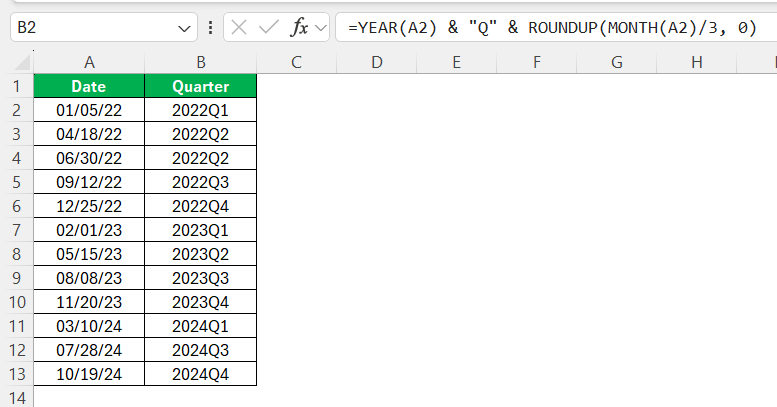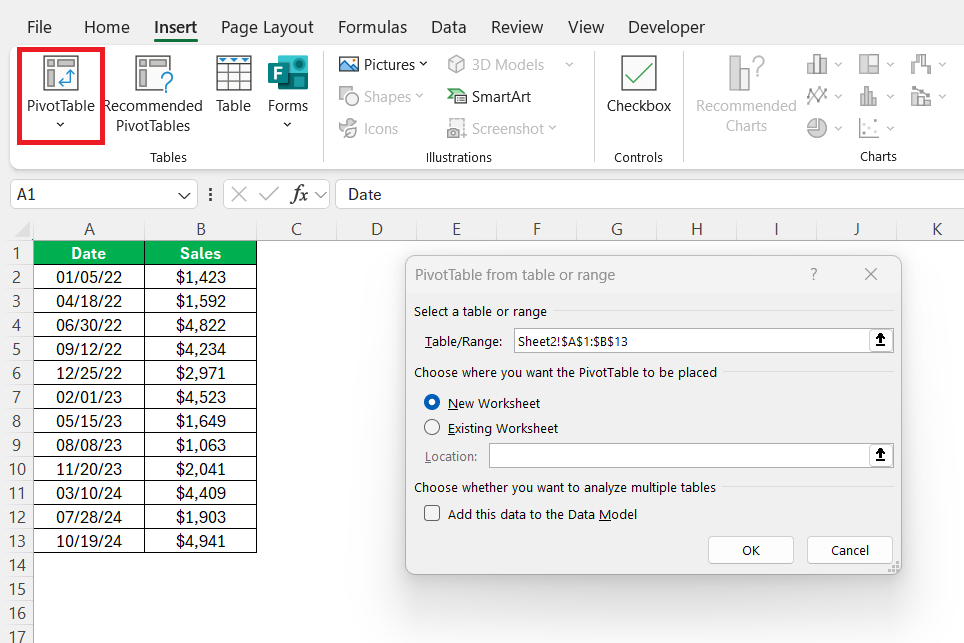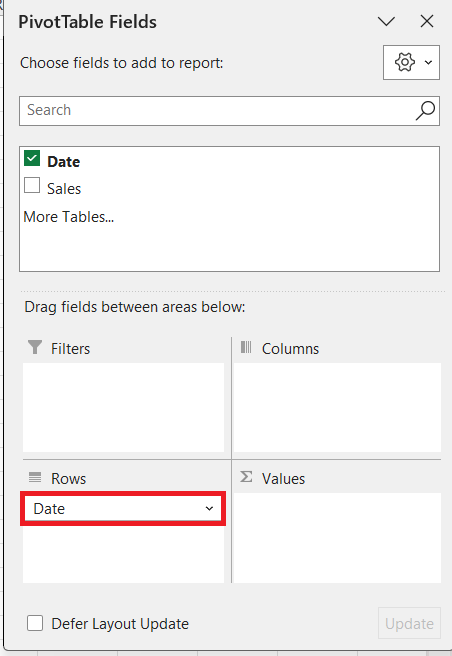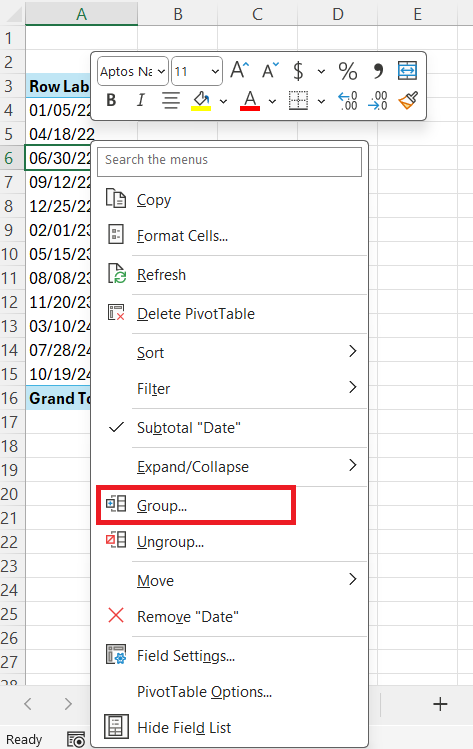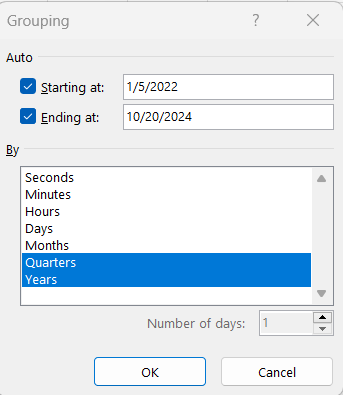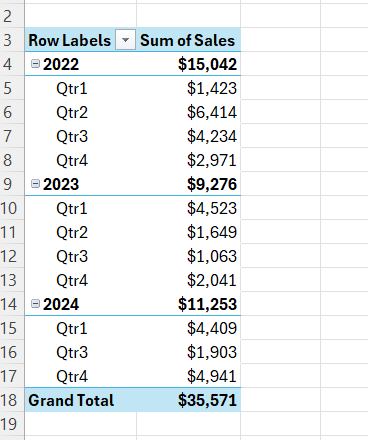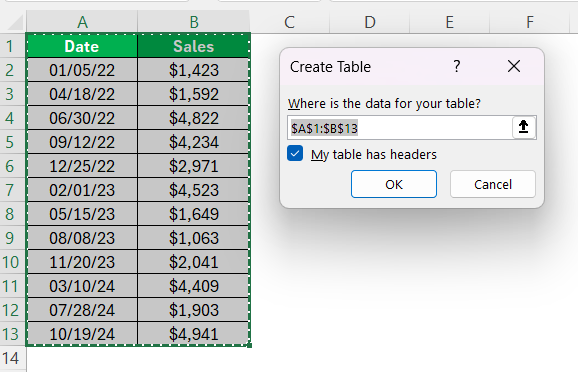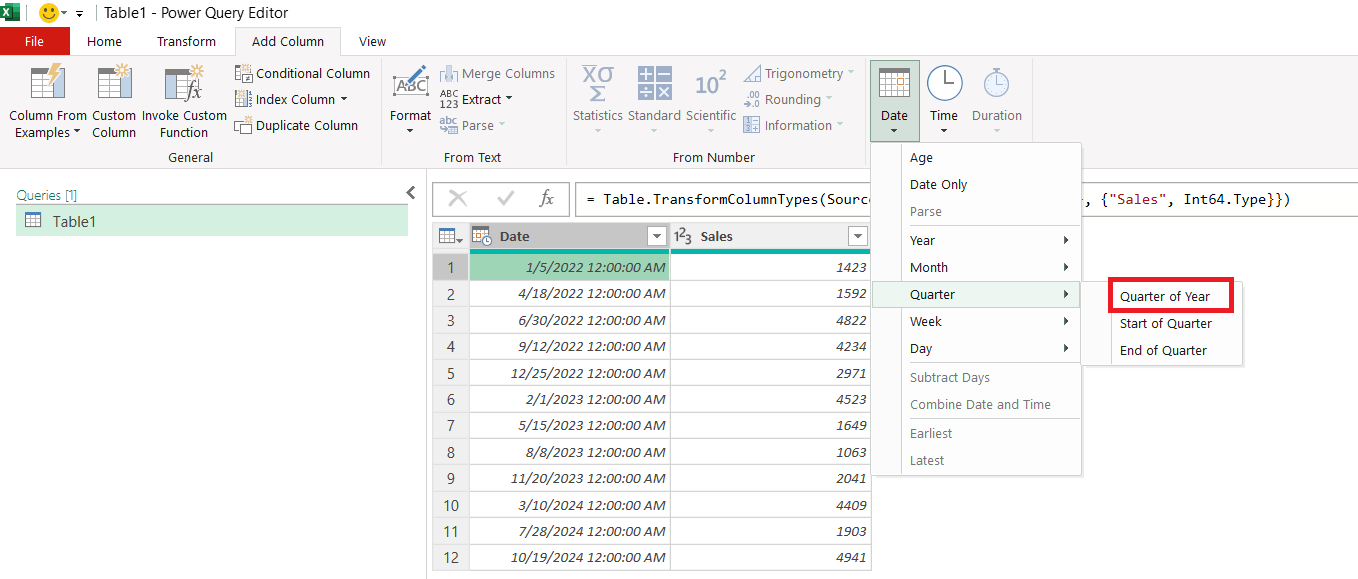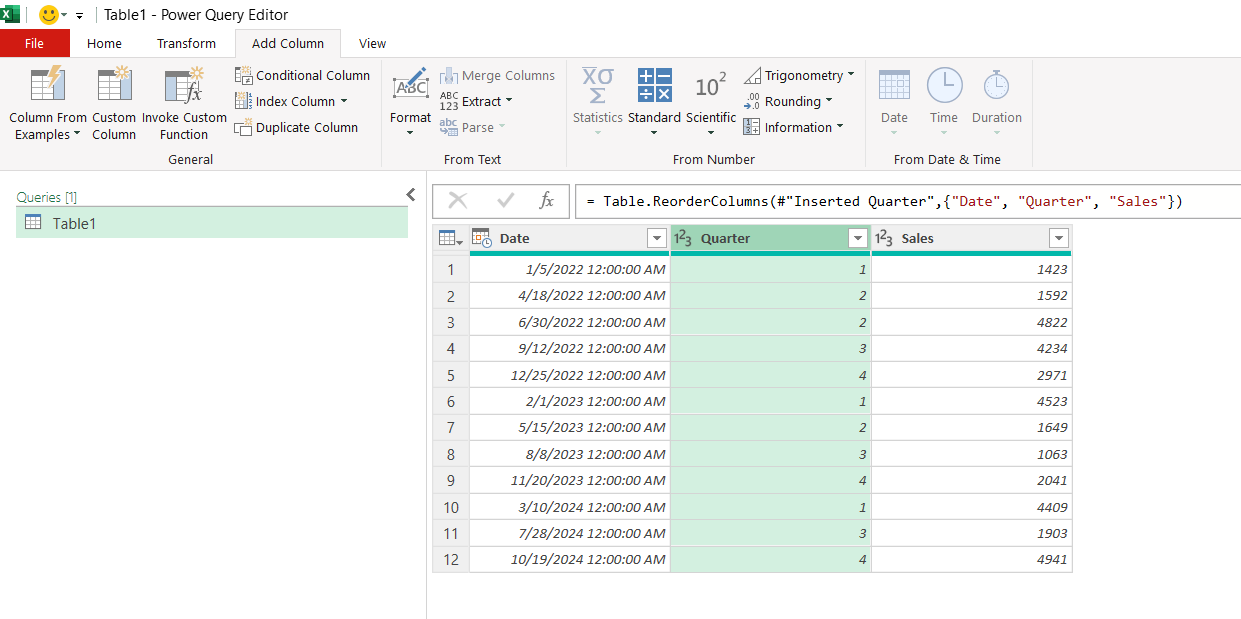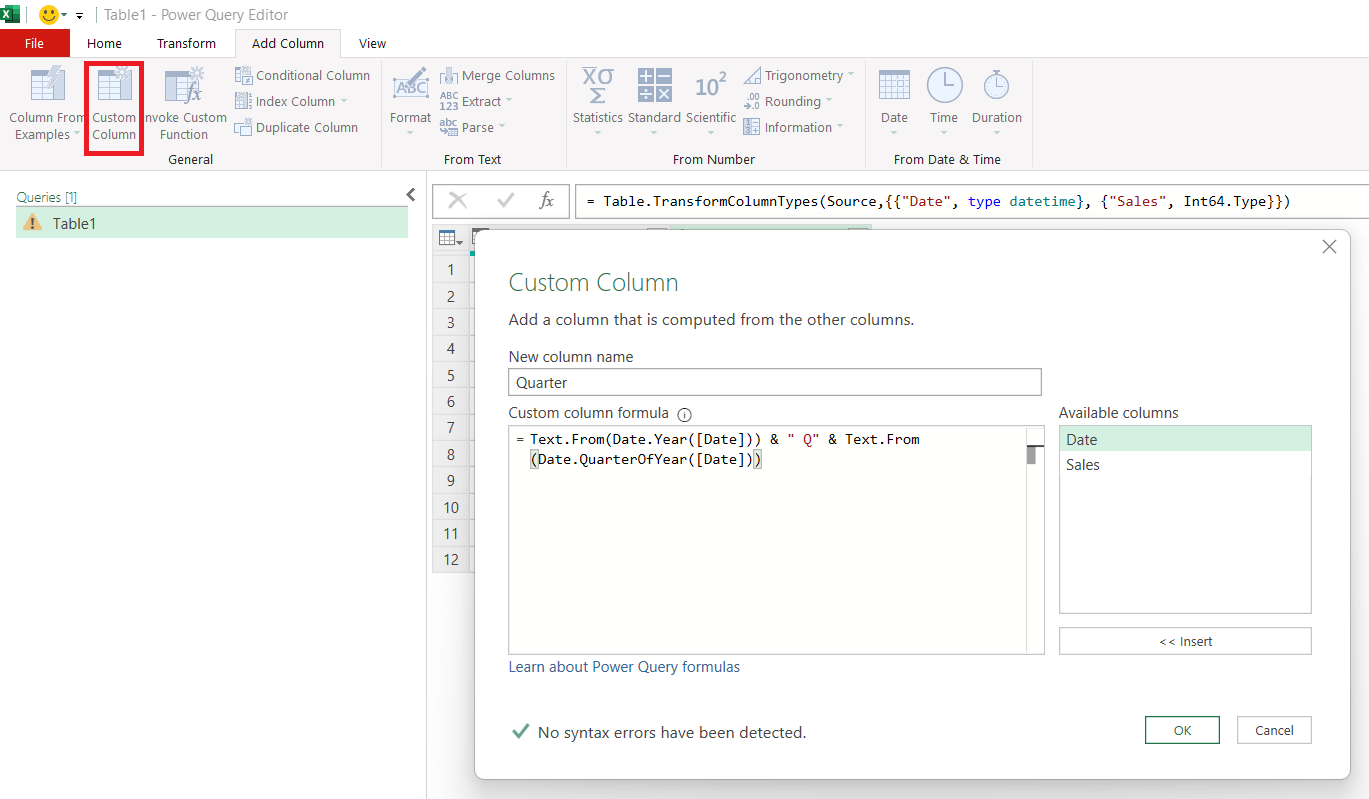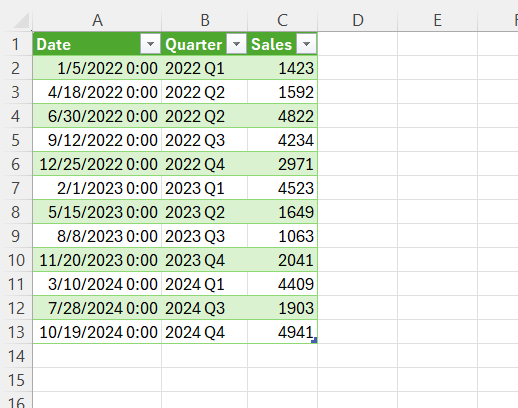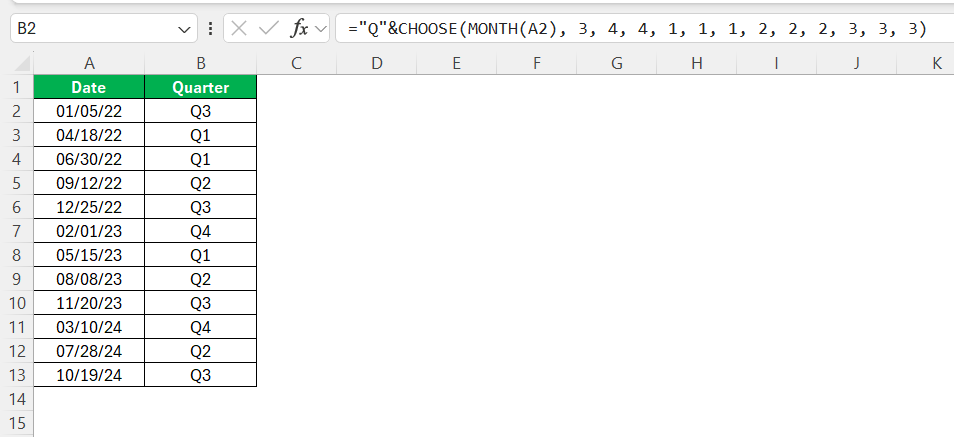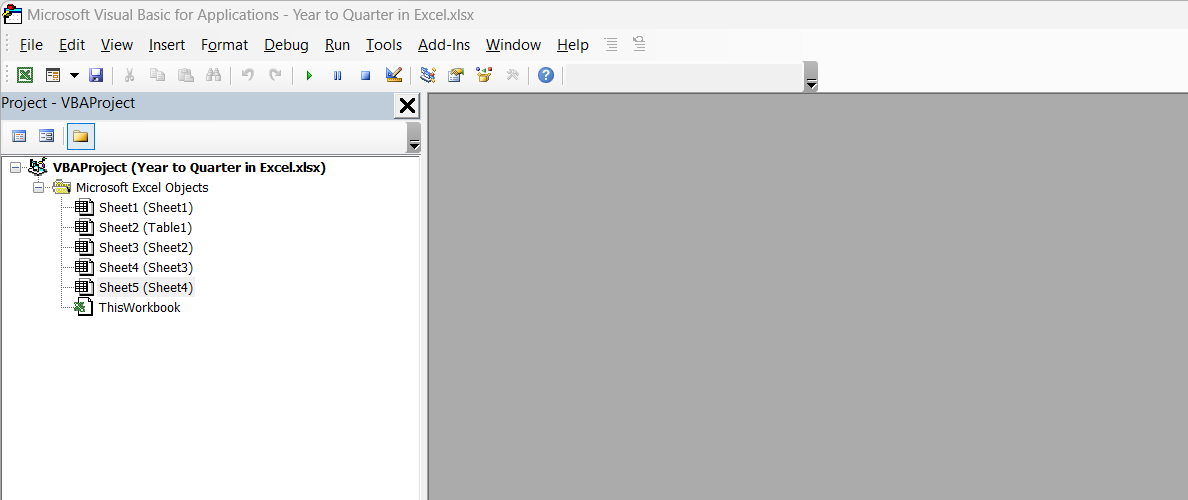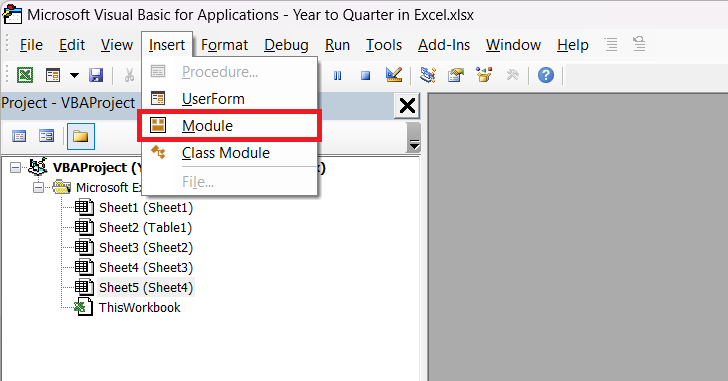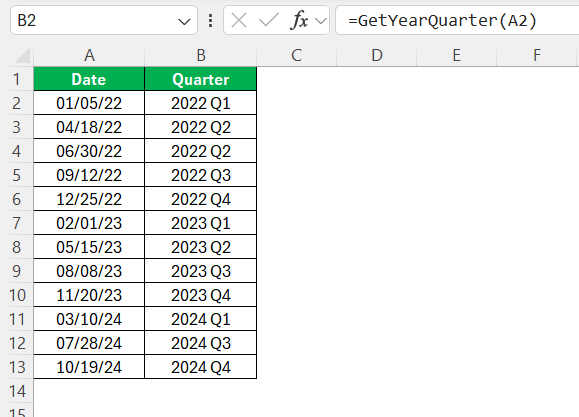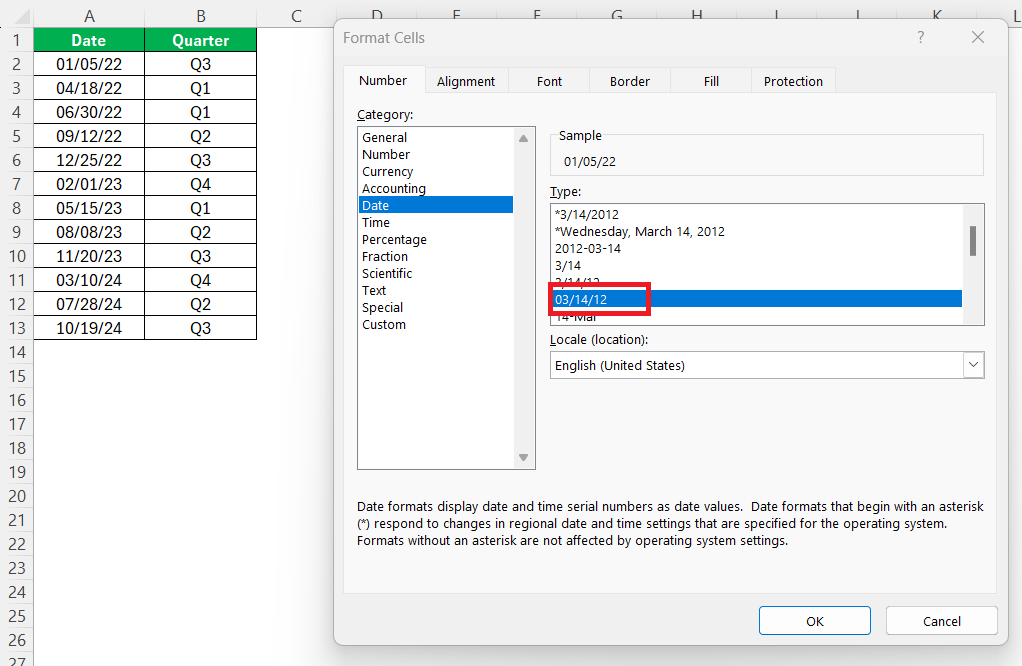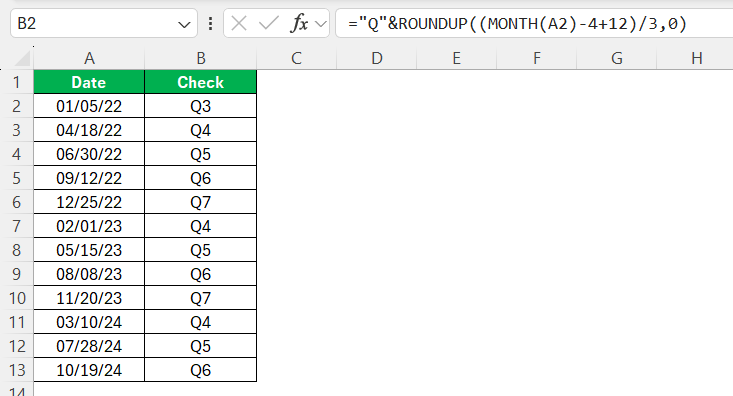When working with financial or sales data, I often need to analyze trends by quarter rather than by individual years. In Microsoft Excel, converting a year into a quarter is a straightforward process. Let me walk you through the different methods on How to convert year to quarter in Excel.
Key Takeaways:
- Excel provides multiple ways to convert dates into quarters, including formulas, PivotTables, and Power Query.
- Using YEAR(date) & “Q” & ROUNDUP(MONTH(date)/3, 0) quickly extracts the quarter from a date.
- PivotTables allow for easy grouping of dates into quarters for efficient data analysis.
- Power Query automates quarter extraction, making it ideal for large datasets.
- Custom formulas and VBA scripts help align quarters with non-standard fiscal years.
Table of Contents
Simplifying Date Conversions
Handling a vast array of dates in Excel can be intimidating, especially when I need to analyze them by quarter and year. Fortunately, Excel’s built-in functions make simplifying date conversions a breeze. By using date-related functions, I can transform unwieldy date data into clear and concise quarter and year formats, facilitating easier analysis and reporting.
Why Converting Dates Matters
Converting dates into quarters is vital for several reasons. Firstly, it aggregates data into manageable segments, simplifying trend analysis and forecasting. By segmenting data quarterly, I can observe seasonal patterns and compare performance across similar periods—critical for informed decision-making in business contexts.
Furthermore, this conversion aids in financial reporting and budgeting. Many businesses and industries operate and report on a quarterly basis, making the ability to convert dates to quarters an essential skill. It ensures that data is congruent with reporting standards and timelines, which is indispensable for maintaining accuracy in financial documents and presentations.
Methods to Convert Year to Quarter
Method 1 – The Quick Conversion Formula
To swiftly convert months to quarters in Excel, I rely on a speedy, go-to formula. Suppose my financial year coincides with the calendar year; the formula I use is a meld of these functions –
YEAR(date)&”Q” & ROUNDUP(MONTH(date)/3, 0).
- YEAR(date) – Extracts the year from the date.
- MONTH(date)/3 – Divide the month number by 3 to determine the quarter.
- ROUNDUP(…, 0) – Rounds the result up to the nearest whole number. Ensures months 1-3 fall into Q1, 4-6 into Q2, 7-9 into Q3, and 10-12 into Q4.
- “Q” & … – Concatenates “Q” with the calculated quarter number to return the final result.
It’s wonderfully simple – I slot my date into the function, and voilà, I’ve got the quarter for that month. The ROUNDUP function ensures that months correctly roll up to the appropriate quarter, from “Q1” through “Q4”.
I typically enter this formula into a cell adjacent to my date and then drag it through the column to convert all my dates at once. It’s quick and efficient, saving valuable time off my data processing tasks.
Method 2 – Using Pivot Tables for Quarterly Analysis
When I need to group data by quarters quickly, I use a Pivot Table:
STEP 1: Select the data range and insert a Pivot Table (Insert > PivotTable).
STEP 2: Drag the date field into the Rows section.
STEP 3: Right-click on any date and select Group.
STEP 4: Choose Quarters and Years as the grouping criteria. Click OK to apply.
This method is ideal when working with large datasets where I need quarterly summaries.
Method 3 – Using Power Query
Power Query is a powerful tool when I need to transform data efficiently. Here’s how I use it to extract quarters:
STEP 1: Load my data into Power Query (Data > Get & Transform Data > From Table/Range).
STEP 2: Select the column containing dates.
STEP 3: Go to Add Column > Date > Quarter > Quarter of Year.
This generates a new column with the corresponding quarter number.
If needed, I concatenate it with the year using Add Column > Custom Column with the formula:
Text.From(Date.Year([Date])) & ” Q” & Text.From(Date.QuarterOfYear([Date]))
Click Close & Load to bring the transformed data back into Excel.
This method is excellent for handling large datasets efficiently and automating the process of quarter extraction
Time-Saving Tips for Date Analysis
Advanced Excel Hacks
Streamlining with Custom Formulas
In situations where built-in Excel functions don’t quite cater to my needs, crafting custom formulas is my next course of action. These formulas can integrate functions like DATE, YEAR, and TEXT to fulfill more complex quarter calculation requirements. For example, I might use a custom formula to accommodate a fiscal year that begins in July rather than January.
This tailored formula could look like =”Q”&CHOOSE(MONTH(A2), 3, 4, 4, 1, 1, 1, 2, 2, 2, 3, 3, 3), assuming the date is in cell A2.
This approach considers the fiscal year shift and adjusts the quarter assignment accordingly. By utilizing custom formulas like this, I can ensure my data is aligned perfectly with the unique fiscal periods relevant to my analysis.
Using VBA for Automatic Quarter
For repetitive tasks, I sometimes use VBA to automate the process. Follow the steps below to convert year to quarter in Excel –
STEP 1: Press ALT + F11 to open the VBA Editor.
STEP 2: Click Insert > Module.
STEP 3: Copy and paste the above VBA code into the module.
Function GetYearQuarter(d As Date) As String Dim q As Integer q = Int((Month(d) - 1) / 3) + 1 GetYearQuarter = Year(d) & " Q" & q End Function
STEP 4: Close the VBA Editor and return to Excel.
STEP 5: Use the function in a cell like this:
=GetYearQuarter(A2)
This method is particularly useful when I need to process multiple records quickly without relying on formulas.
Enhancing Your Excel Productivity
Keyboard Shortcuts for Speedy Data Formatting
Mastering keyboard shortcuts in Excel is a non-negotiable for me when it comes to speeding up data formatting, particularly with date and quarter conversions. For example, using Ctrl + 1 quickly opens the ‘Format Cells’ dialog box, where I can choose a date format that’s conducive to quarter calculations.
Similarly, Ctrl + Shift + # instantly formats selected cells into the date format.
To convert these formatted dates into quarters, I might still use a formula, but the shortcuts expedite the process of getting my data into the right starting format. Additionally, using Ctrl + D to fill down or Ctrl + R to fill right saves me from dragging formulas across numerous cells, thus minimizing the chance of errors and maximizing efficiency.
Common Pitfalls and How to Avoid Them
Troubleshooting Incorrect Quarter Assignments
When I encounter incorrect quarter assignments, it’s often due to simple oversights in the setup of my formulas. I double-check that my date cells are formatted correctly as Excel dates rather than text or numbers, which is a common pitfall. I also ensure that my formulas account for whether I’m working with calendar quarters or a company’s fiscal quarters.
I look out for leap years or off-by-one errors—small differences that can lead to a month being assigned to the wrong quarter.
If the problem persists, I consider creating a more radical audit, using conditional formatting to highlight unexpected quarter assignments and scrutinizing my formulas more closely.
Ensuring Accuracy Across Different Year Starts
To ensure accuracy across different fiscal year starts, I adjust my formulas to account for the offset from the standard calendar year. If a company’s fiscal year begins in a month other than January, my go-to formula =”Q”&ROUNDUP((MONTH(date)-start_month+12)/3,0) aligns the fiscal quarters correctly, where ‘start_month’ is the numeric value of the first month of the fiscal year.
Moreover, I stay vigilant about the unique challenges posed by leap years, making necessary tweaks so that February’s extra day is incorporated seamlessly into my quarter calculations. By fine-tuning my approach in this manner, I guarantee that my data remains consistent over time, regardless of when a fiscal year commences or the quirks of the calendar year.
FAQs: Excel and Quarterly Breakdowns
How to convert year to quarter in Excel?
To get the quarter of the year in Excel, use the formula =”Q”&ROUNDUP(MONTH(A1)/3, 0), which will display the quarter as “Q1”, “Q2”, “Q3”, or “Q4” depending on the month in cell A1. This formula can be filled down to find quarters for an entire column of dates.
Can Excel Automatically Detect Fiscal Years?
Excel cannot automatically detect fiscal years as it requires specific input regarding when a fiscal year starts. However, you can set formulas to interpret dates based on the starting month of the fiscal year, such as using the CHOOSE or IF functions to assign the correct fiscal quarter and year.
How Do I Handle Quarters for Non-Standard Fiscal Years?
For non-standard fiscal years, adjust the quarter formula to match the fiscal calendar, such as =”Q”&CHOOSE(MONTH(A1), 4,1,1,1,2,2,2,3,3,3,4,4) for a fiscal year starting in February. Replace A1 with the cell containing the date you’re evaluating.
Is There a Limit to the Dates Excel Can Convert to Quarters?
Excel can convert dates to quarters as long as dates are within Excel’s date system range, typically between January 1, 1900, to December 31, 9999. Dates outside this range cannot be processed for quarter conversions in Excel.
How to convert months into quarters in Excel?
To convert months into quarters in Excel, use the formula =”Q” & INT((MONTH(A1)+2)/3), which groups the month from cell A1 into a quarter as “Q1”, “Q2”, “Q3”, or “Q4”. Drag the formula down to apply it to other cells in the column.
John Michaloudis is a former accountant and finance analyst at General Electric, a Microsoft MVP since 2020, an Amazon #1 bestselling author of 4 Microsoft Excel books and teacher of Microsoft Excel & Office over at his flagship MyExcelOnline Academy Online Course.

